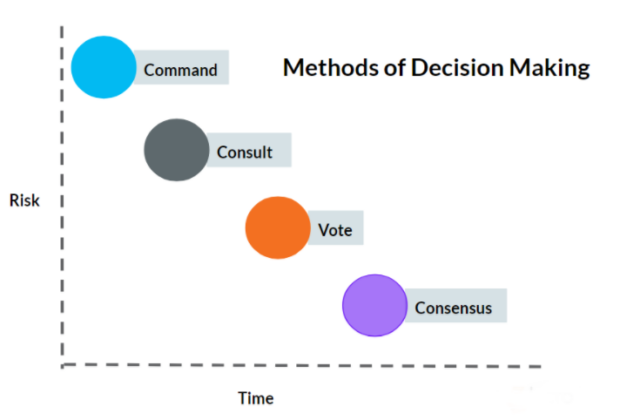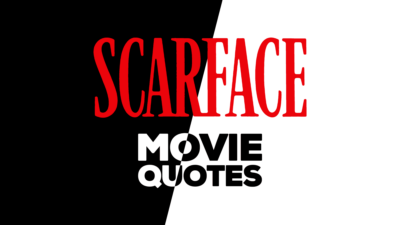As a business professional, you make decisions all the time. From big-picture strategic choices to small, everyday operational decisions, your choices can have a direct impact on the success of your department and even your entire company.
So, how do you make sure you’re making the best decisions possible? The answer is to use the right methods of decision making for each situation. There are multiple decision making methods, each with its own strengths and weaknesses.
If you’ve been through Crucial Conversations training, then this might sound familiar.

How To Choose The Right Decision-Making Method
Here are four common decision-making methods and when to use them:
Command
In command decision-making, the leader makes the decision without input from others. This is the fastest way to make a decision, but it can also lead to poor decisions if the leader doesn’t have all the information they need.
Command decision-making is best used in situations where the decision needs to be made quickly, and the leader has the expertise and experience to make a good decision on their own. For example, a CEO might use command decision-making to decide how to respond to a sudden crisis.
The downside is increased risk. If the decision is a bad one, other people in the organization wouldn’t have enough time to present other options or opinions.
Consult
In consultative decision-making, the leader seeks input from others before making a decision. This gives the leader more information to work with and can help them make a better decision. However, it can also slow down the decision-making process.
Consultative decision-making is best used in situations where the decision is complex and there are multiple stakeholders involved. For example, a manager might use consultative decision-making to decide how to allocate resources to different teams.
Vote
In voting decision-making, the group discusses the options and then votes on the best one. This is a democratic way to make decisions, but it can lead to gridlock if the group can’t agree on a decision.
Voting decision-making is best used in situations where there is a clear set of options and the group is diverse and has a wide range of expertise. For example, a board of directors might use voting decision-making to elect a new CEO.
Consensus
In consensus decision-making, the group discusses the options until everyone agrees on a decision. This is the most time-consuming decision-making method, but it can also lead to the best decisions because everyone has a say and feels invested in the outcome.
Consensus decision-making is best used in situations where the decision is important to everyone involved and there is no clear consensus on the best option. For example, a team might use consensus decision-making to decide on a new product design.
Which Methods Of Decision Making Should You Use?
The best decision-making method for the situation depends on a number of factors, including:
- The importance of the decision
- The complexity of the decision
- The number of stakeholders involved
- The time available to make the decision
- The diversity of the group making the decision
Here is a table that summarizes the four main methods of decision making and when to use them:
| Decision-making method | When to use it |
|---|---|
| Command | When the decision needs to be made quickly and the leader has the expertise and experience to make a good decision on their own. |
| Consultative | When the decision is complex and there are multiple stakeholders involved. |
| Vote | When there is a clear set of options and the group is diverse and has a wide range of expertise. |
| Consensus | When the decision is important to everyone involved and there is no clear consensus on the best option. |
Beware Of Decision-Making Traps That Could Impact Your Career!

Whenever you receive an email from a colleague requesting your decision, take a moment to carefully consider the nature of their request. If you respond without thinking through the type of decision being asked, then you could find yourself in a trap.
For example, let’s say you are an engineer and have expertise in a certain area, like drones. Someone else at your company, a leader of a different division, makes a request to your IT department to approve a deal with a new company that uses AI drones. Your IT department feels uncomfortable approving the request and sends it to legal. Your legal team isn’t sure what to do, but they know about your drone expertise and send the request to you.
What do you do? Do you approve or deny the request?
If you do either, you might be walking into a trap. Why? You were just asked by someone, who isn’t your boss, to make a command decision for another department. This should be a major red flag.
Multiple departments (IT and legal) were smart enough to pass the buck and dump this “decision bomb” in your lap. If you research the AI drone company, and send a Command decision to your legal and IT departments denying the request, then what will the leader of the other division think? They won’t be happy. Do you have the authority to make decisions for people in other departments, even if you have specialized knowledge that they do not possess? Will your colleagues think that you are overstepping your authority? Will they complain to HR? What will be the impact on your reputation at the company?
In situations like this, it’s best to immediately involve your boss and ask everyone involved what decision-making method is needed for this project. Your expertise might give you a false sense of authority and blind you to the internal politics of making a Command decision instead of calling for a Consensus.
Understanding The Value Of Different Decision-Making Methods

There is no one-size-fits-all answer to the question of which decision-making method to use. The best method for the situation depends on a number of factors.
However, by understanding the four common decision-making methods and when to use them, you can make better decisions that lead to better outcomes for your business. It might even prevent you from losing your job or getting fired.
Urooj is a freelance writer of some repute, even if she says so herself. Her goal in life is to be published in every international magazine and visitor-load-weary website. She can be contacted at kaziurooj [at] gmail [dot] com.






















 21 Funny Taylor Swift Jokes (That Will Leave You Breathless With Laughter)
21 Funny Taylor Swift Jokes (That Will Leave You Breathless With Laughter)
Leave a Reply